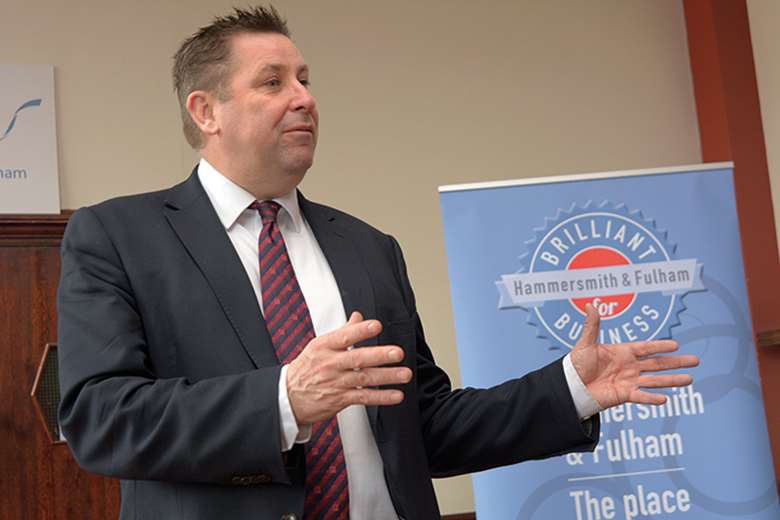Tri-borough collapse: the fallout
Neil Puffett
Thursday, May 4, 2017
End of pioneering arrangement raises questions over future of councils pooling children's services.

Launched in June 2011, the tri-borough arrangement in west London involved joint provision of children's services, adult social care and public health across Hammersmith & Fulham, Kensington and Chelsea, and Westminster councils.
The arrangement has been hailed by the government as an exemplar of best practice. However, in March, Kensington and Chelsea, and Westminster councils announced they intend formally to serve notice to sever ties with Hammersmith & Fulham and deliver services on a "bi-borough" basis. So how did the split come about?
Factors behind the split
When the arrangement launched, all three councils were run by Conservative administrations, but this ended in 2014, when Labour was elected to run Hammersmith & Fulham Council.
The prospect of separation stems from Hammersmith & Fulham's plans to create an integrated family support service (IFSS) based on an early intervention model.
Hammersmith & Fulham's Labour administration has had concerns for some time about the value of the tri-borough, citing a "lack of transparency" and "built-in conflicts of interest".
Council leader Stephen Cowan says that in its last two annual budgets, it had found £31m in savings, but the tri-borough contributed no more than £200,000 of that.
He says the creation of the IFSS will "enable a systemic integration of budgets, workforces and professional practice across a range of 0-18 family and health services".
Services will include children's centres, youth provision, family and early help services, health visiting, school nursing, substance misuse and sexual health.
The council also wants to explore incorporating adult social care assessment and provider services. Both Kensington and Chelsea, and Westminster were aware of the plans.
A report put together by Westminster Council in March for a meeting held on the day of the announcement that tri-borough would be coming to an end, said the councils were told by Hammersmith & Fulham that it intended to service notice. But they took the decision to terminate the arrangement themselves to allow "sufficient time to make alternative plans and implement them" by the start of the next financial year in April 2018.
Implications
The split will have significant implications for the councils involved. A Westminster Council report reveals the cost of Hammersmith & Fulham leaving the arrangement is set to be more than £1.5m - at least £500,000 for each council.
It states that councils will face both one-off and recurrent costs.
"The issues which may have a financial impact will include potentially less favourable terms under contracts due to reduced economies of scale; staffing consequences as sharing takes place across two instead of three boroughs; and possible temporary recruitment costs and interim contractor costs if certain key staff do not in the short-term work for bi-borough," the report states.
"There may be opportunities to create savings in designing the new bi-borough arrangements, but these are likely to be less significant than the potential cost increases from the earlier issues noted."
The report highlights issues that the councils will face during the "disaggregation", stating that "significant numbers" of staff will be affected. "Given the services have been integrated for over five years, the disaggregation of staff will not be a simple exercise," it says.
"In some cases, one borough has more staff than it would need for a solo borough, or bi-borough service, and in other cases, there are not enough staff for a particular council if the services were to be split. A detailed assessment of staffing needs for a bi-borough service and a single borough service will need to be undertaken and adjustments to staff numbers will need to be made."
The report states there will be no redundancies as a result of these changes.
Remaining questions
The split also poses wider questions about the future of combining services in this way.
Speaking to CYP Now in 2010, months before the launch of the tri-borough, Michael O'Connor, then strategic manager of children and young people's services at Westminster Council, said changes in political leadership may require a rethink on some arrangements, but financial arguments may overcome party divisions.
"If there is a strong business case for something, that should stand alone," he had said. "If it is producing financial benefits, I would argue it on those grounds."
Whether the situation deters partnerships between other councils in light of the potential costs of entering, and leaving such arrangements, remains to be seen.
However, the government is keen on the idea and, for now, collaborative children's services appear to still be popular. Last month, Windsor and Maidenhead Council agreed to become the third member of Achieving for Children, a social enterprise established to run children's services in the two London boroughs of Kingston and Richmond.
Achieving for Children intends to expand to a total of five council areas by 2022.
TRI-BOROUGH KEY FACTS
- Ofsted rated children's services at Kensington and Chelsea and Westminster "outstanding", and Hammersmith & Fulham "good" in 2016
- The cost of the collapse of the tri-borough is estimated to be at least £1.5m
- The formal severance notice served by Kensington and Chelsea and Westminster means Hammersmith & Fulham will be excluded from the tri-borough from 1 April 2018




